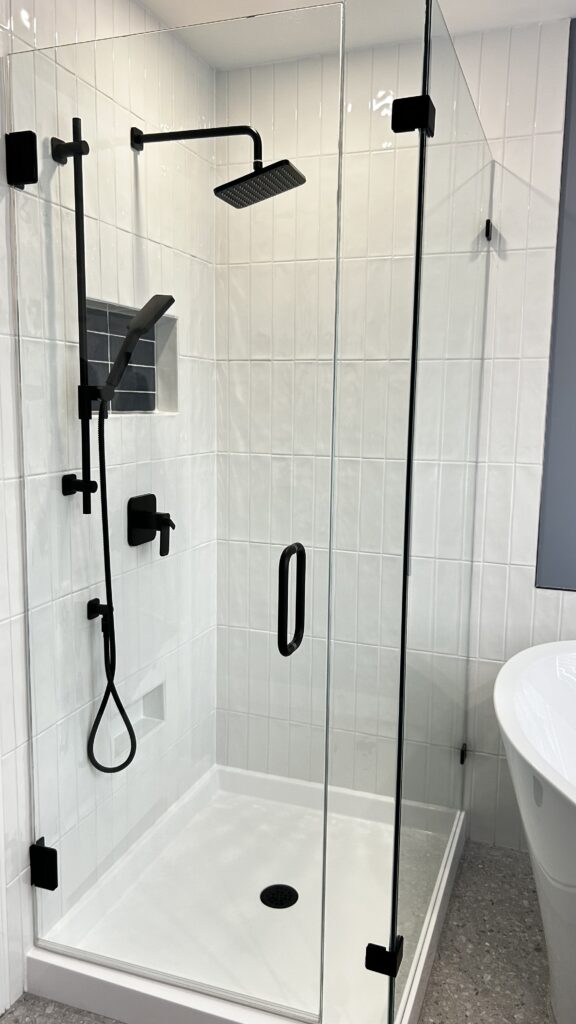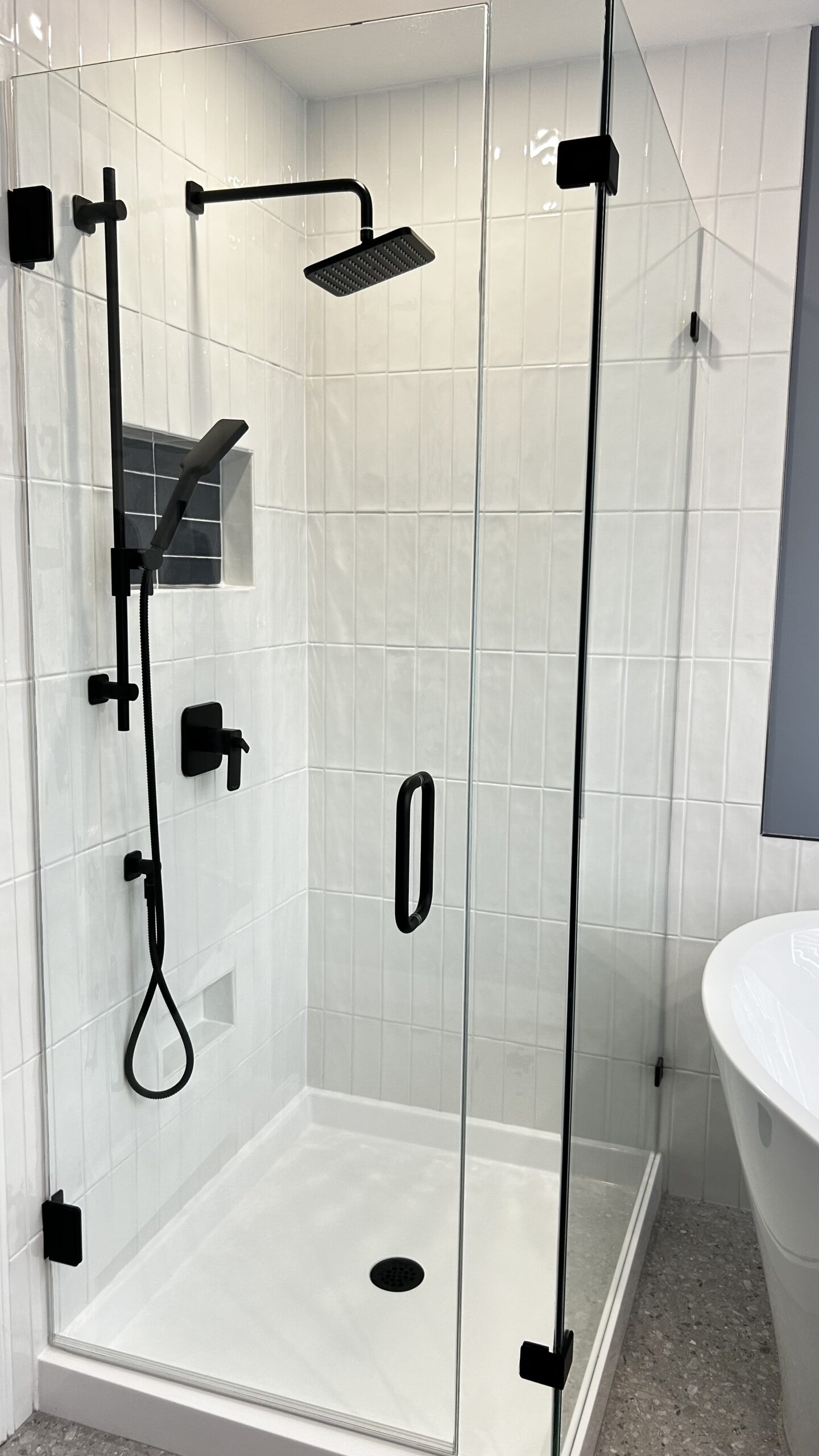
Creating a peaceful, spa-inspired bathroom isn’t just for luxury homes or big budgets. With the right choices, a little creativity, and some planning, we can bring that calming, high-end spa feeling into our own spaces—no matter how much we’re working with. Whether we’re updating a powder room or revamping a full ensuite, marble can make a stunning difference in how the space feels.
Let’s walk through practical ideas and smart strategies to get that luxurious marble look, even on a tighter budget. We’ll cover real design tips, cost-saving tricks, and layout ideas to help every step feel doable and worthwhile.
Marble stands out because it instantly makes a bathroom feel serene and elegant. That’s not just because of how it looks, but also how it works with light and space. It reflects light naturally, softens harsh lines, and adds texture without being loud. Above all, it gives even small rooms a more open and airy vibe.
However, natural stone like marble often gets written off as too expensive. That is to say, many people assume it’s only for luxury builds. But with more versatile marble products available, there’s a growing range of ways to use marble affordably. From solid surfaces to composite blends, we can now find options that fit a range of budgets and bathroom sizes.
When designing on a budget, the goal isn’t to cover every inch of the bathroom with marble. Instead, we can focus on impact areas. For instance, using marble on a vanity countertop or as a feature wall in the shower creates a focal point without requiring full coverage. This approach balances the look and cost.
We should also think about using leftover or remnant marble. Many suppliers have offcuts that are perfect for small vanities or shelving. In other words, we don’t always need full slabs to get the spa feel. This is one area where a little really does go a long way.
To stay on budget, mixing materials is key. That means pairing marble with ceramic, glass, or even painted finishes that complement it. For example, we might use marble around the sink area and then choose white or neutral ceramic tiles elsewhere to keep costs down. As a result, the bathroom still feels cohesive and high-end without pushing the budget too far.
Similarly, marble-look porcelain tiles have come a long way. Although they’re not the same as the real thing, they can help extend the look in less noticeable areas like floors or lower shower walls. We still get visual continuity, but for less money.
Most spa-inspired bathrooms rely on a soft, neutral palette. So, we should stick to whites, greys, soft beiges, and natural tones. This works well with marble, especially if we’re using Carrara or Calacatta styles. Likewise, keeping the color scheme simple allows us to highlight the natural veining in the marble instead of competing with it.
In small bathrooms, too many colors or textures can feel crowded. However, clean tones help the space feel larger and calmer. In the same vein, using minimal patterns and matte finishes on paint or cabinetry will complement the stone’s soft shine.
Even if the entire bathroom can’t be finished in marble, we can choose one striking piece to become the centerpiece. For example, a custom marble shower bench, a thick marble slab shelf, or a stunning sink surround. These are details that make the space feel customized and special.
The key is to choose something we’ll see and use every day. That way, the investment brings daily comfort and satisfaction. To clarify, we’re not just spending for looks—we’re enhancing the feel and use of the space too.
Lighting plays a big role in how marble shows up in a bathroom. Natural light brings out the depth and texture of the stone, but not every bathroom has a big window. Therefore, layered lighting becomes essential. We can use a mix of task lighting around mirrors and soft ambient lights around the room to enhance the stone’s reflective qualities.
Mirrors also help. A well-placed mirror can double the impact of any marble surface, especially in small spaces. For instance, placing a large mirror above a marble vanity will bounce the light and show off the stone’s unique patterns from more angles.
We don’t need ornate fixtures to make a bathroom feel like a spa. In fact, simpler is often better. Think of flat black or brushed brass taps, slim showerheads, and minimal handles. These allow the marble to stand out, which is the real star of the room.
In addition, simpler fixtures are usually more budget-friendly and easier to clean. That’s another reason to choose straightforward designs. Over time, they hold up better and keep the space feeling calm and uncluttered.
Another budget-friendly route is looking for pre-fabricated marble pieces. These are pre-cut and ready-to-install parts like shower walls, countertops, and backsplashes that have fewer customization costs. That means less cutting and finishing, which brings the price down.
We’ve found that many homeowners are surprised by how much value they get from these ready-made options. Visiting a trusted marble manufacturer helps us explore which pre-fab pieces are available and how they might fit into our space.
One common design mistake is thinking a bigger bathroom automatically feels more spa-like. But really, layout and flow matter more. For example, having clear walking paths, proper storage, and separation between wet and dry zones improves how the space functions and feels.
To clarify, a well-planned small bathroom often feels more comfortable than a larger one with a poor layout. It’s about making each section of the room serve a purpose. Even in tight layouts, we can still incorporate marble details that stand out and improve functionality.
Once the remodel is done, styling the space thoughtfully keeps the spa mood intact. We suggest using soft towels in neutral colors, adding a small wood stool or tray for natural warmth, and keeping counters uncluttered. These simple touches enhance the calm without costing much.
Likewise, a few glass jars for cotton swabs, a rolled towel stack, or a single green plant can make the space feel intentional and peaceful. This is especially important if the marble is subtle or used in small doses—it helps carry the look throughout the room.
Marble needs care, so we should plan for that from the beginning. Sealing the surface regularly protects it from moisture and staining. Therefore, when choosing marble, we should always ask about maintenance needs and finishes that reduce upkeep.
For high-traffic bathrooms, polished finishes might look sleek but show water spots more easily. In contrast, honed marble has a soft matte feel that hides wear better. We often recommend honed for shower walls and flooring to reduce visible wear over time.
If we’re not sure where to start, we can always reach out to a reputable marble expert to help answer questions, provide samples, or walk us through custom ideas.
How can I use marble in a small bathroom without overwhelming the space?
We recommend choosing one feature to highlight with marble, like a vanity or a shower wall. Use light tones and keep other materials simple to maintain a spacious, calm look.
Is natural marble too expensive for most bathroom budgets?
Not necessarily. By using remnants, pre-fab pieces, or combining marble with affordable materials, we can create a high-end look without high costs. It’s about using it wisely.
What’s the best way to maintain marble in a bathroom?
Seal it regularly, clean with gentle products, and avoid acidic cleaners. Honed finishes are easier to maintain than polished in wet areas like showers and floors.
Can I mix marble with other tile materials?
Yes, combining marble with ceramic or porcelain works well, especially in areas where marble isn’t practical. This helps with both design balance and budget control.
Where should I start when planning a marble bathroom?
Start with the layout and budget. Then choose your marble feature piece, like a countertop or shower wall. After that, plan supporting materials and lighting around it.
For more guidance or to speak with someone about your project, contact us for support and we’ll be happy to help you plan a marble bathroom that truly feels like home.

* Excluding Long Weekends